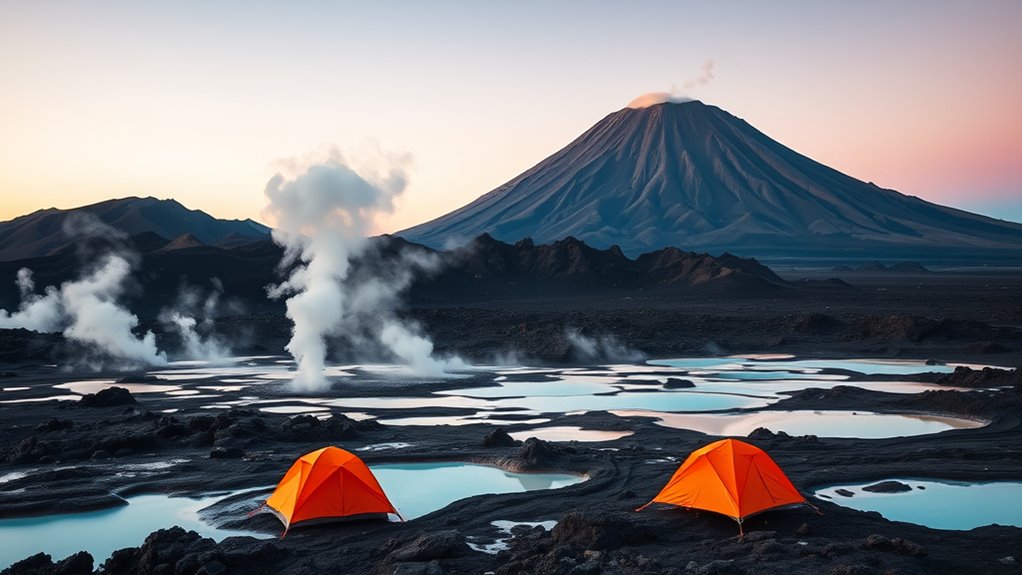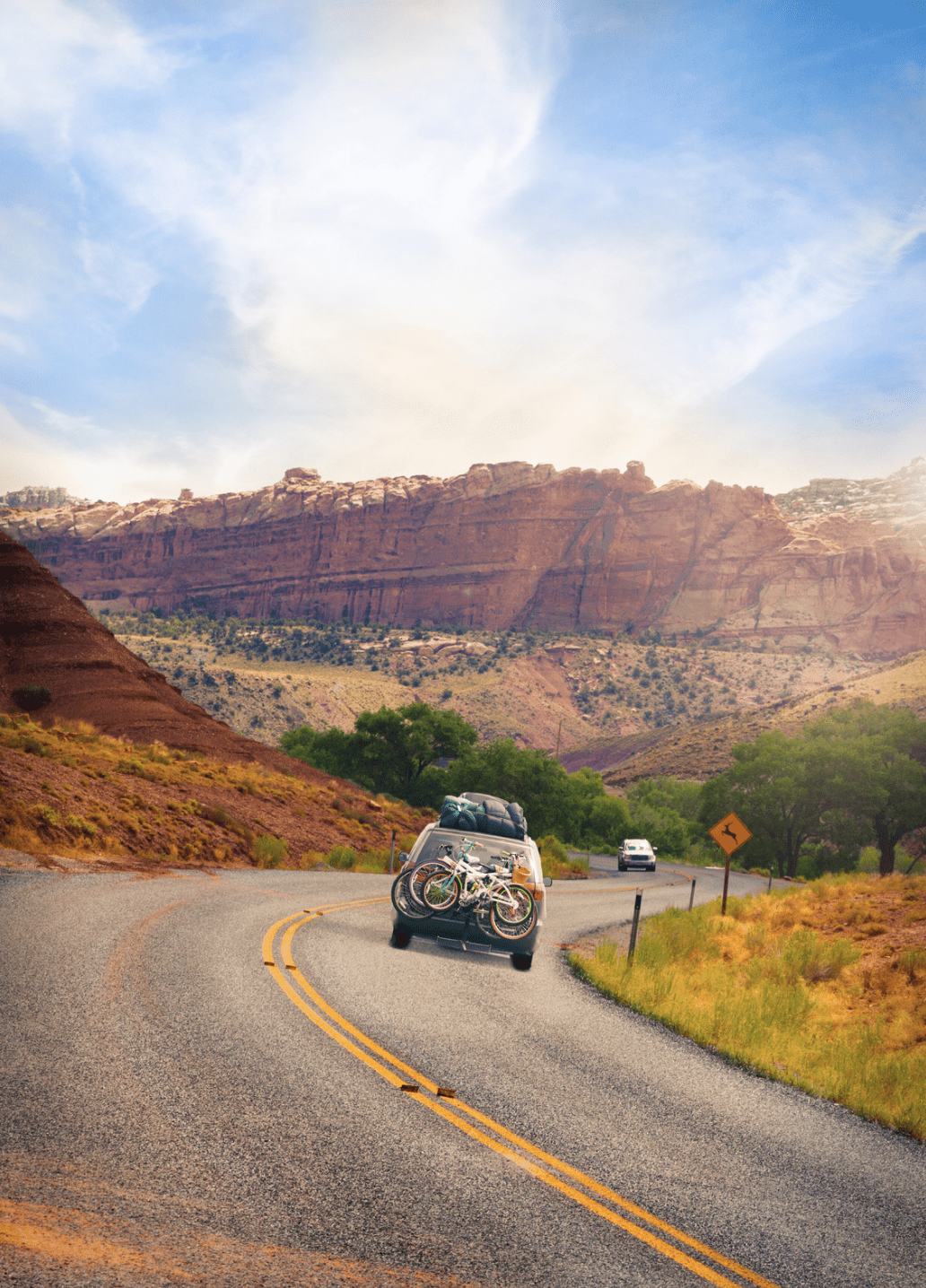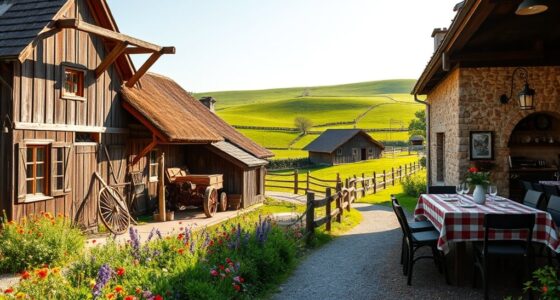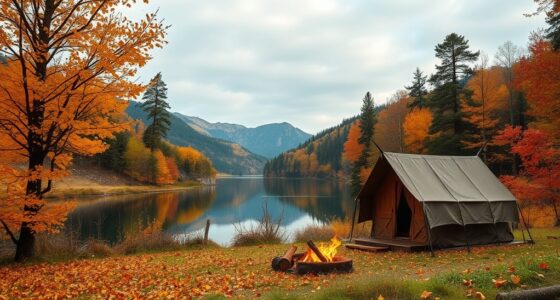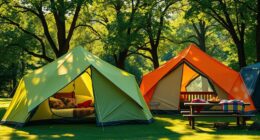Camping near volcanoes allows you to witness Earth’s geothermal power firsthand, with features like lava flows and steaming vents offering an immersive experience. You’ll observe active geological processes, but must follow strict safety protocols due to hazards like unstable lava, toxic gases, and intense heat. Proper gear and awareness are essential for safety, and local guidelines help guarantee a secure stay. Continuing exploring reveals how these extraordinary landscapes deepen your understanding of Earth’s inner workings.
Key Takeaways
- Camping near active volcanoes offers opportunities to observe lava flows, geothermal vents, and Earth’s dynamic geothermal processes firsthand.
- Safety is paramount; always follow local guidelines, stay within designated zones, and use proper gear when exploring volcanic and geothermal sites.
- Lava flows create striking landscapes but pose hazards like unstable terrain; viewing should be from safe, designated areas.
- Geothermal vents emit steam and gases, supporting unique ecosystems; proper ventilation and monitoring are essential for safety.
- Such sites provide immersive educational experiences about Earth’s internal heat and volcanic activity, enriching your appreciation of geothermal wonders.
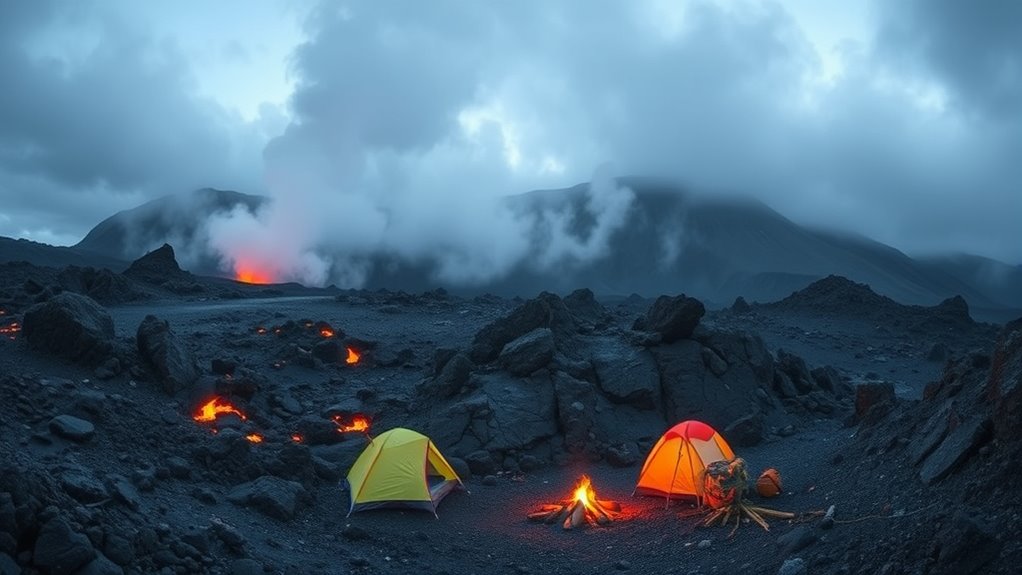
Have you ever considered camping near active volcanoes? This experience offers an unparalleled opportunity to observe Earth’s dynamic processes firsthand. However, it demands careful planning and a thorough understanding of volcanic features, such as lava flows and geothermal vents, to guarantee safety and maximize the experience. Lava flows, the molten rivers that emerge during eruptions, represent both a mesmerizing spectacle and a significant hazard. When approaching these areas, you need to recognize that lava flows can extend for kilometers, altering landscapes and creating new terrains. They are typically characterized by their cooled, solidified surfaces that can be sharp and unstable, posing risks of falls or injuries. The proximity to active lava flows provides a unique vantage point to witness volcanic activity; however, it also requires strict adherence to safety guidelines and local regulations to prevent accident or exposure to toxic gases. Additionally, monitoring volcanic activity reports is crucial for staying informed about potential eruptions or changes in the environment.
Geothermal vents, another prominent feature of volcanic regions, serve as indicators of ongoing subterranean heat transfer. These vents release steam, sulfur gases, and sometimes boiling water, creating an environment rich in geothermal energy. When camping near these vents, you experience the natural warmth and the distinctive smell of sulfur firsthand. The presence of geothermal vents highlights the interconnectedness of volcanic activity and Earth’s internal heat system. They also influence local ecosystems, supporting specialized flora and fauna adapted to extreme conditions. While they enhance the geothermal appeal of a campsite, they demand vigilance because the gases emitted can be hazardous if inhaled in concentrated amounts. Proper ventilation and awareness of gas emissions are vital for safety.
Strategically choosing your campsite near these geothermal features can deepen your understanding of volcanic activity, but it’s essential to monitor activity reports and heed warnings from authorities. The landscape shaped by lava flows often features rugged terrain that requires careful navigation and appropriate gear. The heat from geothermal vents can affect nearby soil and air temperatures, impacting both comfort and safety. Additionally, these regions often have unstable ground, with areas of recent lava flows remaining hot and unpredictable, increasing the risk of sudden eruptions or ground collapses. You should carry specialized equipment such as gas detectors, sturdy footwear, and protective clothing, and always prioritize designated camping zones that have been evaluated for safety.
Frequently Asked Questions
Are There Safety Guidelines for Camping Near Active Volcanoes?
Yes, there are safety guidelines for camping near active volcanoes. You should always prioritize volcano safety by staying informed through official alerts and monitoring systems. Prepare for emergencies by packing essential supplies, knowing evacuation routes, and having a communication plan. Always follow park regulations and heed warnings from authorities. Staying vigilant and prepared minimizes risks, ensuring you can respond swiftly if volcanic activity increases unexpectedly.
Can I Access Geothermal Hot Springs While Camping?
You can access geothermal hot springs while camping, but you should always follow hot springs etiquette to guarantee safety and respect for nature. Check if thermal pools are designated for public use, and never enter restricted areas. Be aware of potential hazards like sudden steam vents or unstable ground. Always follow posted guidelines, use appropriate footwear, and avoid contaminating the water to protect both yourself and the environment.
What Gear Is Essential for Geothermal Camping Adventures?
For geothermal camping adventures, you need essential camping gear like sturdy footwear, waterproof clothing, and a reliable headlamp. Bring safety precautions such as a first aid kit, thermal blankets, and a thermometer to monitor hot spring temperatures. Consider a portable water filter, gloves, and a map of the area. This gear guarantees safety, comfort, and preparedness, allowing you to enjoy geothermal hotspots responsibly and minimize risks associated with unpredictable hot spring conditions.
Are There Specific Seasons Best for Volcano Camping?
You should plan your volcano camping trips during late spring to early fall when seasonal considerations favor stable weather. During these months, weather impacts are less severe, reducing risks like heavy rain, snow, or extreme temperatures that could hinder safety and access. Avoid winter or off-peak seasons, as unpredictable weather conditions can compromise safety, accessibility, and your overall experience. Ideal timing ensures safer, more enjoyable adventures amidst geothermal wonders.
How Do Local Wildlife Interact With Geothermal Sites?
Like a finely tuned orchestra, local wildlife interacts with geothermal sites through remarkable adaptations. They navigate the heat and mineral-rich environment, developing specialized feeding habits and behaviors to survive. Some animals, such as insects and birds, are drawn to the warmth or minerals, while others avoid the intense heat altogether. These interactions highlight the delicate balance of ecosystems, where wildlife evolution seamlessly integrates with geothermal activity for survival and sustenance.
Conclusion
Camping near volcanoes offers an unmatched glimpse into Earth’s fiery heartbeat, immersing you in geothermal marvels that defy imagination. The experience combines raw natural power with tranquility, creating a uniquely transformative adventure. By observing bubbling springs and volcanic landscapes firsthand, you’ll gain a deeper appreciation for Earth’s dynamic processes. This connection to nature’s most spectacular forces is truly a once-in-a-lifetime opportunity—an experience so profound, it feels like standing at the edge of the universe itself.

